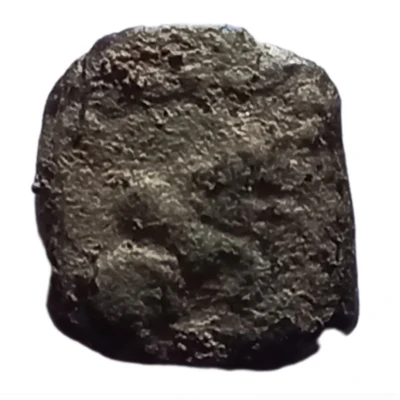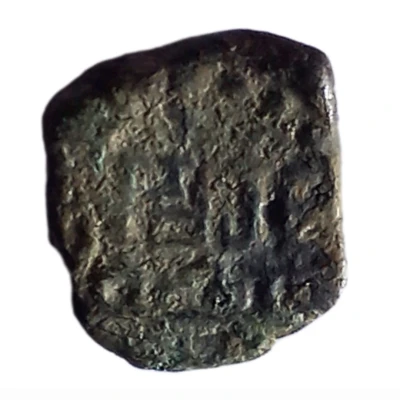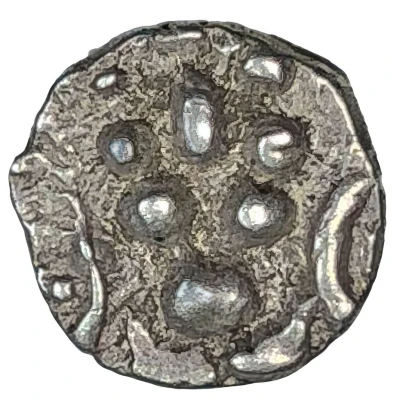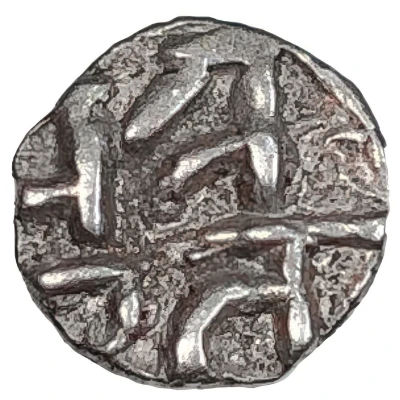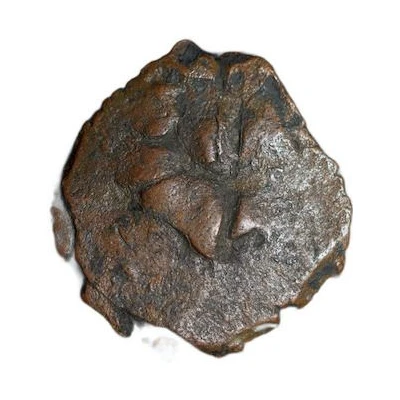
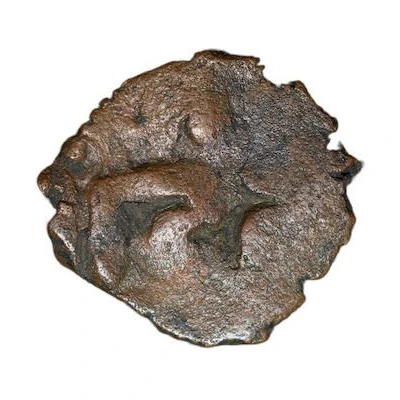

Æ Unit - Kalchuris of Ratnapura ND
| - | 1.2 g | 15.1 mm |
| Issuer | Kalachuri dynasty (Indian Hindu Dynasties) |
|---|---|
| Type | Standard circulation coin |
| Years | 1120-1135 |
| Weight | 1.2 g |
| Diameter | 15.1 mm |
| Thickness | 1.37 mm |
| Shape | Round (irregular) |
| Demonetized | Yes |
| Updated | 2024-10-05 |
| Numista | N#333544 |
|---|---|
| Rarity index | 95% |
Reverse
Srimat Ratnadeva ("De" of "DeVa" in the lower left half).
The script is medieval Nagari from the North-Central Indian region.
Script: Devanagari
Comment
The Kalachuris of Ratnapura were a central Indian dynasty during 11th and 12th centuries. They ruled parts of present-day Chhattisgarh from their capital at Ratnapura (modern Ratanpur in Bilaspur district). They were an offshoot of the Kalachuris of Tripuri, and ruled as vassals of the parent dynasty for many years.According to the 1114 CE Ratanpur inscription of Jajjaladeva I, the Tripuri Kalachuri king Kokalla had 18 sons, the eldest of whom succeeded him on the throne of Tripuri. The younger ones became rulers of mandalas (feudatory governors). The Ratnapuri Kalachuris descended from one of these younger sons. The new branch was established by Kalingaraja around 1000 CE.
Kalingaraja conquered Dakshina Kosala region, and made Tummana his capital. His grandson Ratnaraja established Ratnapura (modern Ratanpur). The inscriptions of Kalingaraja's great-grandson Prithvideva I indicate that he Ratnapuri Kalachuris continued to rule as feudatories of the Tripuri Kalachuris. (wikipedia)
AV example from Dyell's "Living without Silver" with overlay
another variant
Interesting fact
One interesting fact about the Kalchuris of Ratnapura coin is that it features a unique blend of Indian and Buddhist influences in its design. The obverse side of the coin bears the image of a Hindu deity, while the reverse side features a Buddhist wheel and the Kalachuri emblem. This fusion of religious symbols reflects the cultural diversity and religious tolerance of the Kalachuri dynasty, which ruled over a significant part of the Indian subcontinent during the 11th to 13th centuries.
